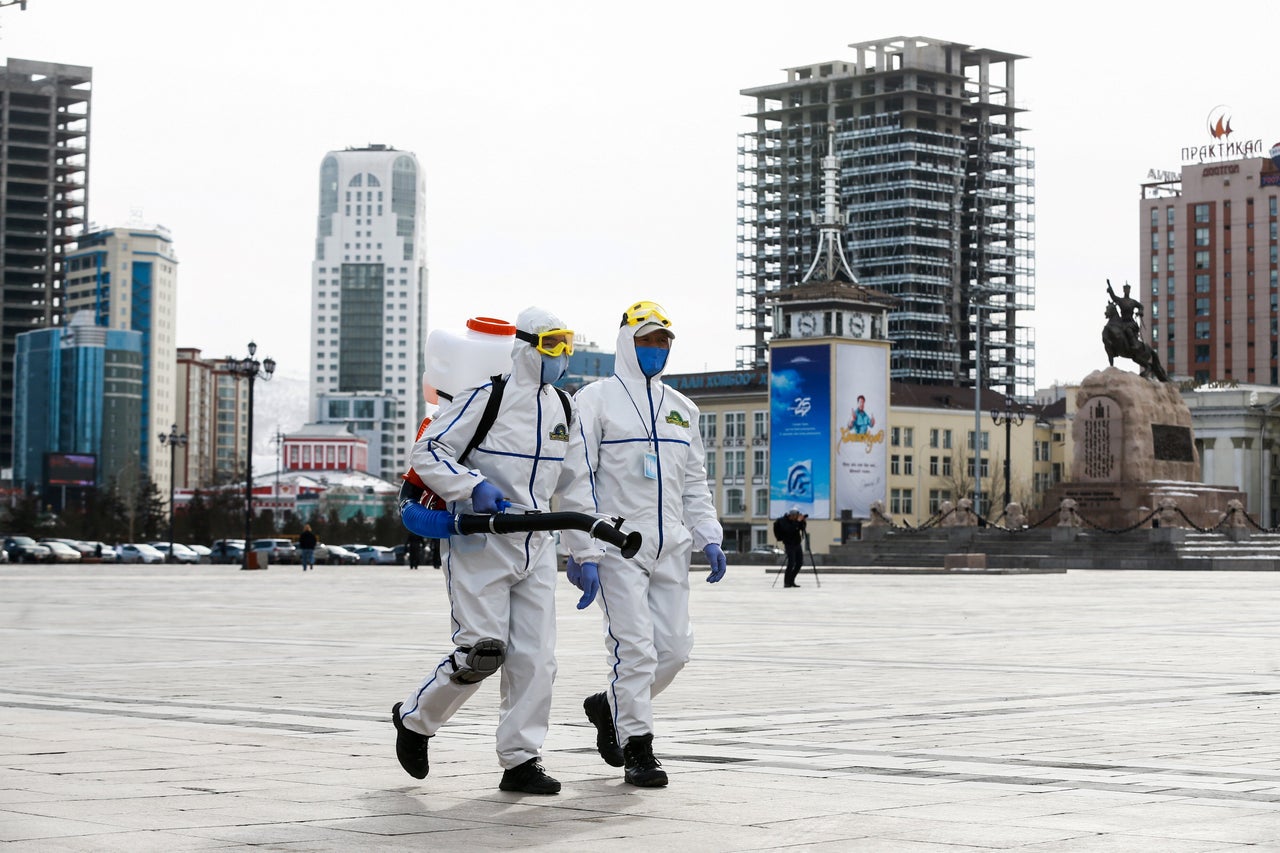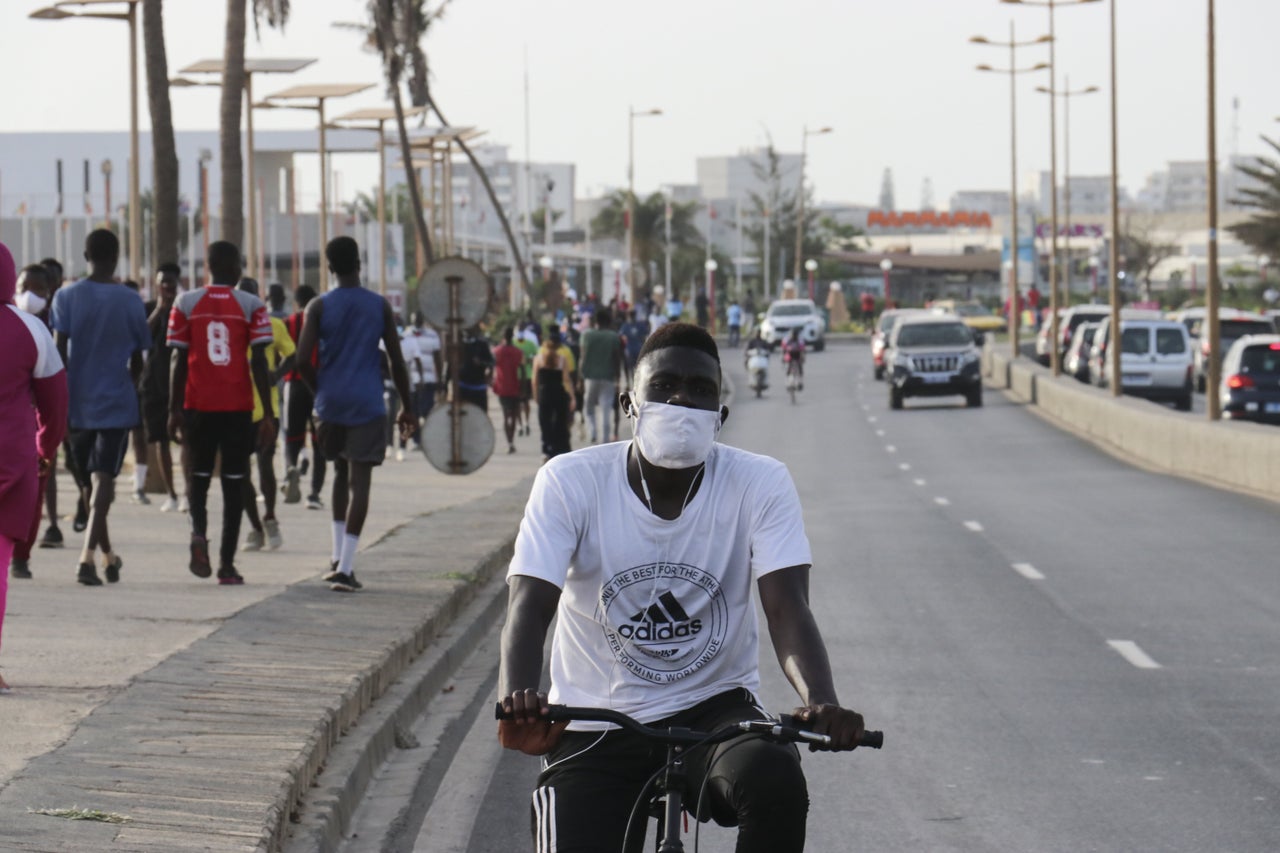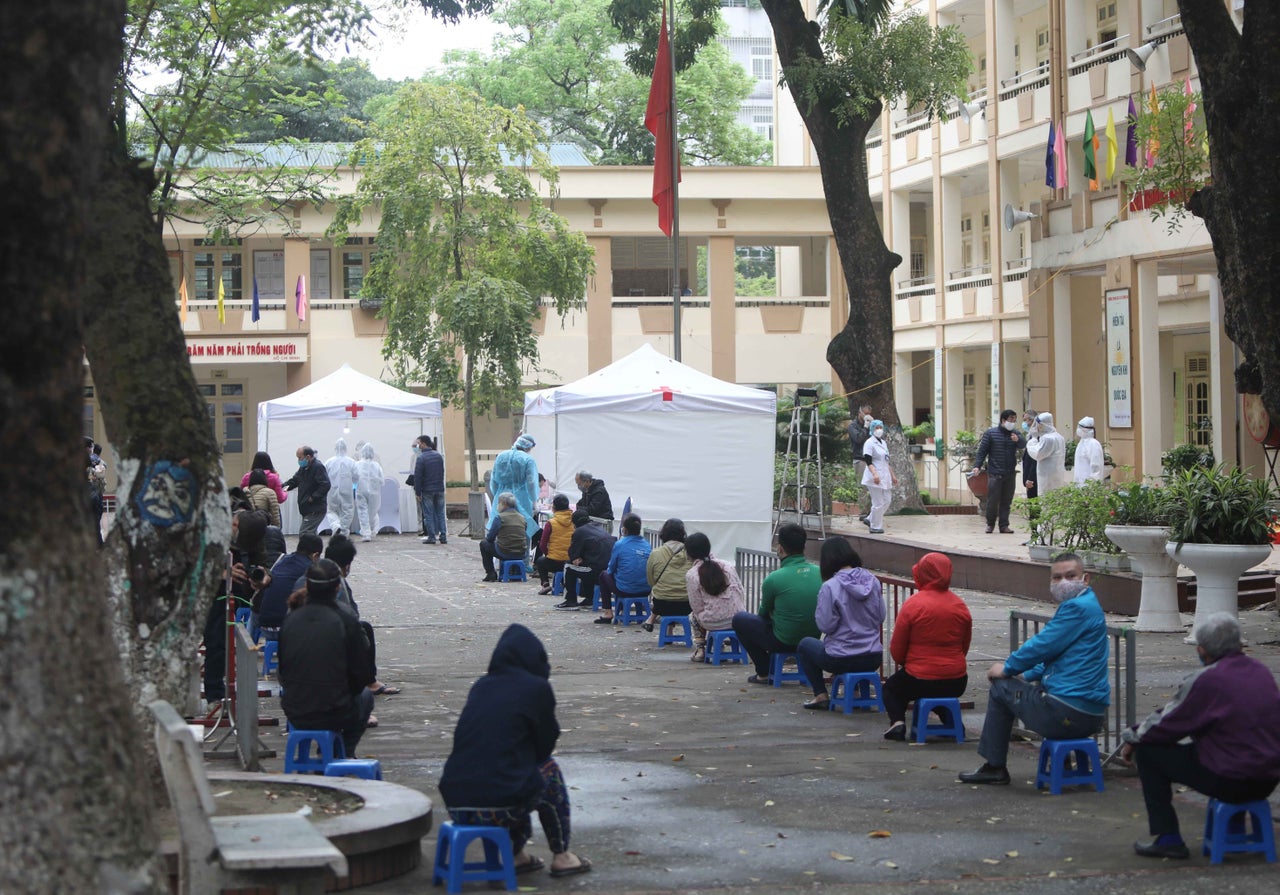The coronavirus didn’t hit wealthy countries first, but it hit them hard. So far, nearly four out of five global Covid-19 deaths have occurred in the global north, which encompasses most developed nations.
The United States, Italy, Spain, France and the United Kingdom contain just 7.5% of the world’s population – and two-thirds of its coronavirus death toll.
While the failures of the developed world to contain the virus have been well-documented, the successes of the global south – comprising newly industrialised or developing countries – have gone mostly unnoticed.
Last month, the World Bank reported that developing countries make up 85% of the global population but account for just 21% of Covid-19 deaths. In late May, the entire region of West Africa – which has a greater population than the United States – had recorded just 654 deaths, a figure some Western countries were racking up every day.
This phenomenon is no coincidence. The global south features countries with a vast range of demographic, climatic and geographic features. Many coronavirus superstars, including Vietnam, Mongolia and Slovenia, share borders with pandemic hotspots. And while it’s true that poor countries have lower testing rates – and some may be fabricating their statistics entirely – conditions on the ground give little indication that the developing world has experienced the coronavirus pandemic as severely as its wealthier counterpart.
So what explains the strikingly lower death tolls in what President Donald Trump once called “shithole countries”? The most convincing explanation, experts said, is that poor countries have simply managed the pandemic better than rich ones.
“Whenever we see success in the developing world, we tend to tell the story in terms of things that are outside their control,” said Charles Kenny, a senior fellow at the Center for Global Development and the author of Getting Better: Why Global Development Is Succeeding and How We Can Improve the World Even More. Over the last few decades, he said, the global south has made huge strides in terms of infrastructure, literacy, health care and welfare policy. Those achievements laid the groundwork for poor countries’ coronavirus response – but have gone almost entirely unnoticed in the developed world.
“We have a problem talking about the policy successes of developing countries, which are considerable,” Kenny said. Western media sources tend to emphasise developing countries’ challenges rather than their achievements. Even when they do get credit for lifting their populations out of poverty, stories in the international press often emphasise the role of Western charities rather than domestic efforts.

But the available evidence suggests that developing countries have tackled Covid-19 not through luck or chance, but rather through the diligent efforts of their politicians and their populations.
In January, while Trump was assuring Americans that the few known cases would soon fall to zero, Senegal was closing its borders, initiating contact tracing and committing to provide a hospital bed to every Covid-19 patient. In February, as Western European leaders allowed the virus to spread at mass gatherings, Mongolia canceled its national lunar new year celebrations and set up a task force with more than 800 staff members.
And in March, as the United States distributed meagre social benefits and bailed out corporations, the Cook Islands, a small country with incomes roughly on par with Sri Lanka, devised a welfare package worth 11% of its gross domestic product that included cash payments to older adults and a three-month waiver of electricity bills for every household.
These cases are not outliers. Many poor countries with small coronavirus outbreaks took deliberate, early and decisive steps while those in the West wasted precious time dithering. And they took these steps against considerable odds.
Senegal, like many sub-Saharan African countries, has a mostly informal economy, making quarantines both logistically difficult and economically devastating. The entire country had just 86 intensive care unit beds at the start of the pandemic. Nevertheless, within weeks of the global outbreak, local officials had established 78 field offices, dispatched contact tracing teams and allocated a $160 million response budget.
As of Saturday, Senegal had just 47 deaths. Pennsylvania, a state with roughly the same population, had 5,931.
“The story of the developing world in recent decades has been falling rates of violence and government services reaching more people. That story has been overlooked because no one wants to tell it.”
- Charles Kenny, author of "Getting Better: Why Global Development Is Succeeding and How We Can Improve the World Even More"
“We’ve managed to set politics aside and put solidarity and togetherness first,” said Aminatou Sar, the Senegal program director for PATH, an international public health nonprofit. The country has spent the years since the 2014 Ebola outbreak deliberately strengthening its health care infrastructure and establishing data gathering and surveillance systems. Senegal didn’t get lucky; it did the work many of its wealthier counterparts refused to.
There are, of course, failures as well as successes in the developing world. Brazil now has one of the world’s worst outbreaks. Some developing country heads of state have touted unproven medications, while others have used the pandemic as an excuse for power grabs and police harassment. With death tolls rising in Egypt, Peru and Bangladesh, many experts fear the virus surging in regions it had previously spared.
But while it’s important to acknowledge those caveats, it’s also worth noting that experts have been predicting calamity in the developing world for months. So far, it hasn’t happened. And when it comes to power grabs and unfounded medical advice, rich countries have made the same missteps as poor ones – hydroxychloroquine, anyone? – and have managed to rack up a death toll that outpaces the developing world by an order of magnitude.
Poor Countries Intervened Early
Perhaps the most decisive step developing countries took to control the coronavirus was intervening before it was too late. Across the global south, countries closed their borders and locked down their populations far sooner than Western countries.
Trinidad and Tobago, for example, shut down its economy the day after recording its first case. Rwanda halted all commercial flights five days after detecting the virus. The Cook Islands, a country whose economy is almost entirely dependent on tourism, canceled all incoming flights before recording a single case of Covid-19.
Albania, a Balkan country with so little hospital capacity that a member of parliament set up a GoFundMe to buy ventilators, has deep economic ties to Italy, one of the countries hardest hit by the virus. On March 8, the same day it confirmed the first case of Covid-19, the country cancelled all travel to Italy. Two days later, it imposed one of Europe’s strictest quarantines, imposing large fines and even jail time for citizens who left their homes. The government shut down public transit, banned gatherings of more than two people and forced residents to apply for permission to use their own cars.
By early June, the country had recorded just 33 deaths, a fatality rate roughly one-tenth as severe as Germany’s and one-thirtieth as severe as that of the United States.

But the best illustration of how important early intervention was to halting the spread of the pandemic comes not from comparing poor countries to rich ones but from comparing them to each other.
Armenia and Georgia are neighbouring countries in the Caucasus region with similar climates, links to the outside world and per capita GDP.
When it comes to the coronavirus, however, they have much less in common. As early as January, Georgia had halted flights from Italy and implemented temperature screening at airports. TV channels gave doctors airtime to describe the course of the virus and give sanitation advice. The government implemented a strict lockdown order on March 6.
Armenia, by contrast, never imposed a strict quarantine and waited to announce a lockdown order until March 15. By early June, Georgia had 800 cases of coronavirus. Armenia had more than 10,000.
Social Trust Eases Social Distancing
While Western reporting has typically focused on the disadvantages poor countries face when responding to the coronavirus, they also have considerable advantages.
“We have our people,” said Sar, the Senegal program director. While the global north has shifted many of its health resources to non-infectious diseases such as cancer and heart disease, developing countries have retained their focus on infectious diseases, including malaria and HIV.
Partly due to its experience with Ebola, Senegal has a sophisticated network of civil society groups and faith-based organisations with extensive experience disseminating health information. Since the start of the pandemic, nongovernmental organisations have produced radio spots in local languages; community leaders have checked in on local residents, and musical artists have recorded songs about hygiene practices.
“We’ve seen community health workers and women’s groups going into communities and telling them about the reality of the pandemic,” Sar said. “It was amazing how quickly you saw people wearing masks. This solidarity and resilience is one of the reasons why the disaster people were predicting hasn’t happened.”
This community health infrastructure, said Brigitte Seim, a University of North Carolina professor who conducts research in Malawi and Zambia, rests on another advantage enjoyed by many developing countries: Higher levels of social trust.
“We often talk about ‘government resources’ without thinking about the broader range of resources that each country has,” Seim said. Countries with less capacity for top-down government efforts often have strong networks for horizontal information-sharing and advice. This can be decisive when handling a virus that requires large numbers of people to wear masks, wash their hands and stay home from work.
“People who trust each other are going to be more willing to amplify the government’s efforts to contain an infectious disease,” she said. “That’s an incredibly powerful resource.”

Governments That Do More With Less
The developing world’s success at containing Covid-19 doesn’t just come from its community organisations. It also comes from its governments.
The best example of this is Vietnam. Rather than try to reinvent the wheel, Vietnam simply executed tested advice from local and international experts: Quarantine people at risk; trace positive patients; advise citizens to wash their hands, and wear masks in public.
Once the pandemic started, the government sent daily text messages to all citizens. Residents used “rice ATMs” to pick up food without violating social distancing rules. The government closed hospitals and quarantined villages when new cases appeared. These might not be the most exciting strategies, but they’re the result of years of deliberate investment.
“We applied an approach that we know works,” said Nhu Nguyen, PATH’s global health securities lead in Vietnam. “Vietnam experienced Sars and the avian influenza epidemic. The public health system has been investing in preparedness for the past 10 years.”
So far, it has paid off. The Vietnamese population experienced considerably less disruption than residents of wealthier countries. Nguyen said that in Hanoi, people were only under strict quarantine for three weeks. As of last week, restaurants had reopened (with temperature checks and a steady supply of hand sanitiser), and offices had invited back their workers.
“We’re already living in the new normal,” Nguyen said.
Many other developing country success stories reflect the same dedication to evidence-based policies and local innovation.
South Africa dispatched more than 28,000 health care workers to check symptoms and spread information door to door. Albania launched an entire TV channel dedicated to educating the public about the virus. Ghana elevated its testing rate by combining samples from multiple patients and following up with individual tests only if the batch came back positive.
All of these innovations reflect the steady improvement in living standards and infrastructure that characterises recent history in the developing world. Over the last 20 years, many poor countries have built comprehensive welfare systems. Many middle-income countries also have universal health care, a structure that has proven to be more capable of allocating resources and tracking patients than America’s fragmented, quasi-privatised system. These governance systems may not capture the world’s attention but they were decisive in tackling Covid-19.
“One of the best-kept secrets about developing country governments is that they do a far better job of providing public services than Western governments did when they were at the same income level,” Kenny said.
Kenny warned, however, that the pandemic is not over. The dire predictions of major outbreaks in the countries least equipped to manage them haven’t come to pass yet, but they could. For all their innovation, poor countries may only have bought themselves time.
But for a disease that spreads exponentially and for which treatments are only now being developed, extra time means extra lives. Even if they have only delayed the spread of the virus, developing countries have achieved more than their global north counterparts — and with far fewer resources.
“The story of the developing world in recent decades has been falling rates of violence and government services reaching more people,” Kenny said. “That story has been overlooked because no one wants to tell it.”
